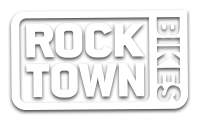Road bike Geometry, "Endurance" vs. "Race" and Ride Impressions and Preferences
We ride a lot of different bikes in the shop world: our personal fleet (which seems to always be changing), test ride bikes at demo events, and customer bikes after a repair. There are different sizes, fit characteristics, and handling. Even in a category defined as 'road' we have endurance, race, gravel, cx race, touring, light touring, and some others (singlespeed cross' anyone?).
I want to cut through the fit differences and what makes bikes handle differently, as well as some key points I think are very important to overall ride enjoyment.
Lately, endurance road bikes have been so very popular. Due to some more favorable handling characteristics, better ride quality on our variable surfaces, and geometry that works, or is set up for what most folks would prefer, we see a lot of this type of bike today. The flip-side to that is that pretty much any bike in the correct size for the rider, can be set up in the position that the rider prefers. So even though we see bikes on the shop floor that may be more comfortable by default to most folks, they can still be set up more aggressively for the rider looking for that position, but perhaps wanting the handling, vibration absorbing properties, or tire clearance of the endurance model.
Kelly doodle :)
To clarify what we're talking about I want to describe the two most important numbers to bike fit, stack and reach. Stack is the distance from the front axle to the lowest point that a stem (the part that holds on the handlebar) can sit and determines the front end height of the bike. Reach is the distance horizontally from the center of the bottom bracket to the center of the headtube (see illustration). This determines the distance from where the rider is sitting to the handlebar. The reason reach is a much better number to use than top tube length, or horizontal top tube length, is because it is based off of the distance that the rider is offset from the crank, no matter what the seat tube angle.
The stack height is important because it sets the range in which the handlebar height can be easily adjusted. Sometimes people can think that it isn't possible to get a Roubaix or Diverge handlebar low enough, or a Tarmac handlebar high enough, even though they like the ride characteristics of that particular bike. This is not the case at all. These bikes can be set to accommodate most riders, as long as they are on the correct size frame, which is why it is really important to have a bike fit properly!
The driving forces for how a particular bike handles are a little more complicated than stack and reach, but I will cover the basics. The headtube/steering tube angle, fork offset, and chainstay length all contribute to the handling, with an honorable mention to reach again. The chainstay is the tube that connects the bottom bracket and rear axle on the frame (see illustration). For a while chainstays had been growing in length, especially when the 29er mountain bikes were new to the scene. To fit the larger wheel and tire, manufacturers were lengthening the chainstays and making the headtubes steeper to make up for the sluggish handling the early 29ers exhibited. As companies were finding value in creating shorter stays, they were able to decrease the steering angle again and create stable, yet snappy bikes. Reach comes into play is when a longer top tube is employed in conjunction with a shorter stem. This will make the handling snappier, yet still have the same headtube angle, which is handy for keeping the wheelbase as short as possible (so you can steer around things well). Fork offset is a little more complicated. Fork offset is the distance that the hub axle is offset from the center of the steering axis. Small changes here can make huge differences in the bike's demeanor. Some companies also use this to eek out a bit more foot clearance for small riders. More offset will decrease the 'trail' of the bike and less offset will increase trail. This changes how the bike reacts to your steering input. It can be similarly altered with headtube angle, but offset will change how the steering feels as you turn the handlebar more.
I use mountain bikes as examples as they have seen the biggest changes lately, but gravel bikes have evolved from the cyclocross bikes we were all using in the past to get road bikes with increased tire clearance. The cyclocross bikes weren't bad for most of our purposes, but they also had higher bottom brackets, different steering angles, fork offset, and stack heights than most riders would want, along with longer chainstays. Many gravel bikes now have road geometry with massive tire clearance, which is more fun on out pavement, gravel, and forest roads!
All of these differences may seem overwhelming, but it ends up being a good thing with all of the choices we have today, as riders can get the exact bike they want, instead of endlessly trying to make another style suit their purpose. We love talking about all of the possibilities and differences with folks everyday, so please stop by if you want to learn more!
-Chris
